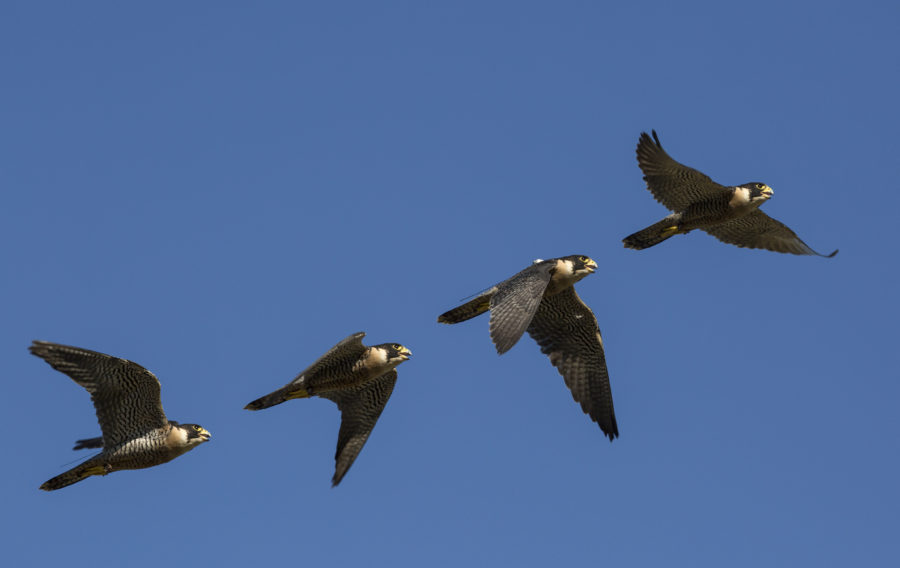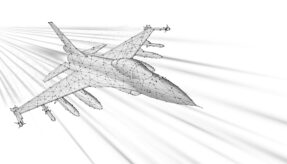
Hitting speeds of up to 200mph, the Peregrine Falcon is the world’s fastest bird.
BAE Systems and City, University of London have been researching how it flies and how this could be developed into new technologies for aircraft.
Research has centred on how it is able to stay in control and airborne at these speeds, and in high winds, and how the way they fly could be applied to aircraft, improving safety and contributing to aerodynamics and fuel efficiency.
Several concepts are being developed include ‘sensory feathers’ – 3D-printed polymer ‘hair’ filaments which would act like sensors on the body of an aircraft, providing an early warning system if it began to stall. More densely packed passive polymer filaments may also be capable of changing the airflow very close to the surface of the aircraft which could reduce ‘drag’ on the aircraft wing-skin. Aerodynamic drag ultimately slows aircraft in flight.
While researchers have also looked at the falcon’s ability to stabilise itself after swooping or landing by ruffling its feathers. This could be applied to aircraft through small flexible or hinged flaps on an aircraft, allowing speedier movement of the wing which makes aircraft able to land more safely at lower speeds. The added safety margin gained using this approach could allow future aircraft of a more compact design or to carry more fuel. In addition, the research so far has shown that the flaps could potentially lower aircraft noise pollution.
Professor Christoph Bruecker from City’s Aeronautical Engineering department, said: “The peregrine falcon is the world’s fastest bird, able to dive for prey at incredibly steep angles and high velocities. The research work has been truly fascinating and I am sure it will deliver some real innovation and benefits for the aerospace sector.”
Professor Clyde Warsop, a specialist in Aerodynamic Flow Control from our military aircraft business based at Filton in Bristol and Warton in Lancashire added: “Working with Professor Christoph Bruecker and his team at City, we’ve investigated how we could apply the unique abilities of the peregrine falcon to aircraft. Bio-inspiration is not a new concept; many technologies that we use every day are increasingly inspired by animals and nature.”
If you would like to join our community and read more articles like this then please click here








